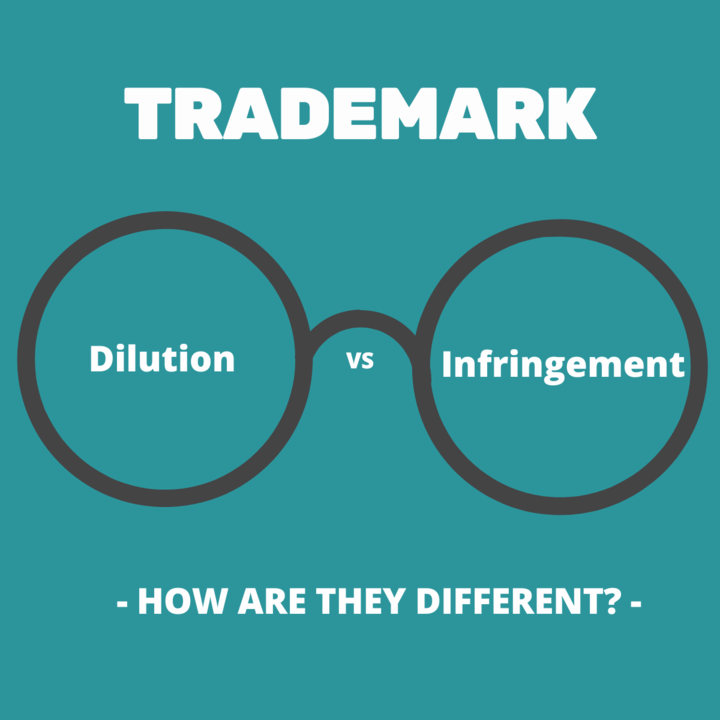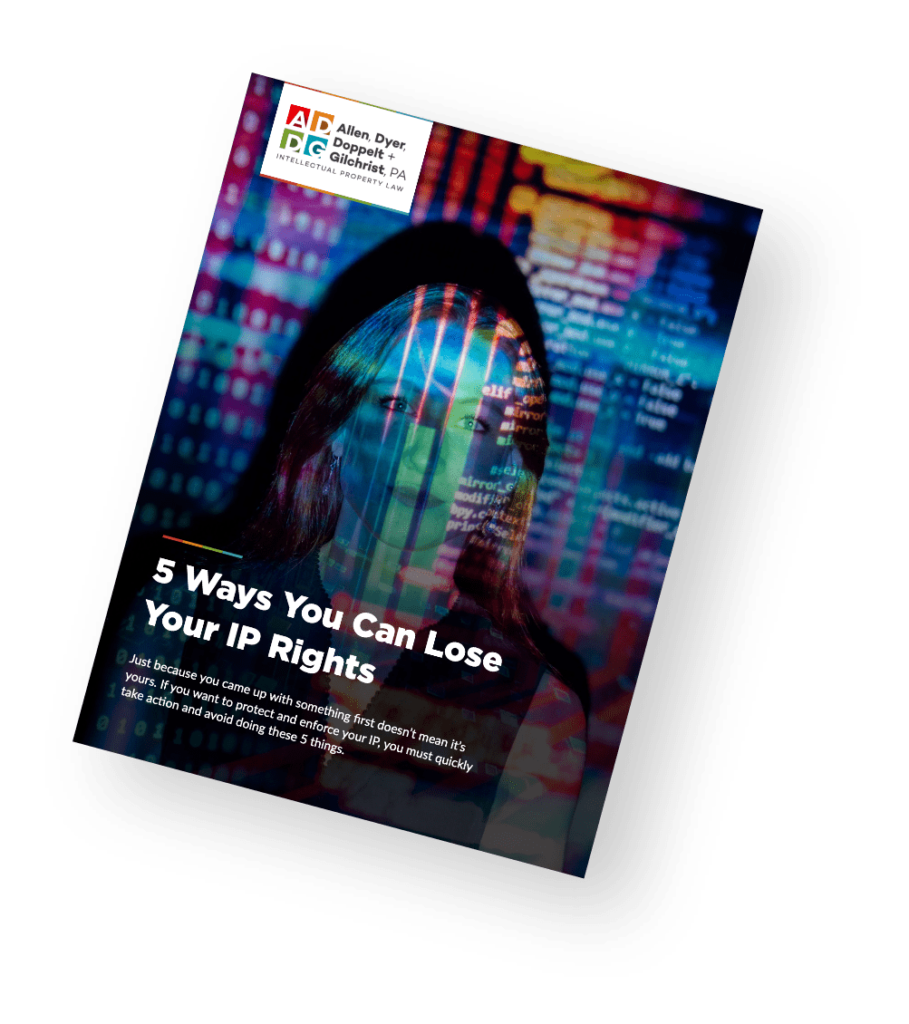In trademark law, two similar but distinct terms are often misunderstood: trademark infringement and trademark dilution. While both are critical concepts that protect a brand’s identity, they each serve different purposes and have specific legal implications. Knowing the differences between infringement and dilution can open up different possibilities when trying to protect your brand’s intrinsic value.

Trademark Infringement
Trademark infringement is a violation that occurs when a third party uses a mark that is identical or confusingly similar to a trademark owned by someone else. This unauthorized use can lead to a “likelihood of confusion” among consumers, leading consumers to believe the goods or services offered by the infringing party are associated with the trademark owner.
The owner of a trademark has the exclusive right to use that mark for specific goods or services. When infringement occurs, the trademark owner can take legal action, seeking both injunctions to stop the unauthorized use and monetary damages for any losses incurred or profits obtained by the infringer. Courts often consider several factors to determine whether infringement exists, including the similarity of the marks, the intent of the infringing party, the sophistication of the consumer and whether the mark holder can prove consumers are confused between the two products or services.
Understanding what constitutes trademark infringement is essential for businesses and trademark owners. Not only does the law of trademarks protect the distinctive quality of a brand, but it also safeguards the company’s reputation and market position. Failing to take action against acts of infringement can lead to loss of customer trust, significant financial setbacks and even the loss of the trademark.
Trademark Dilution
Trademark dilution is designed to protect famous marks. Unlike trademark infringement, which centers on the likelihood of consumer confusion, trademark dilution deals with the weakening or diminishing of a famous mark’s unique identity even if the consumer does not confuse the two products or services. Generally, dilution can occur in two primary ways: blurring or tarnishing.
Blurring occurs when a famous mark’s distinctiveness is compromised due to the existence of a similar mark, even if the goods or services are not directly competing. For instance, if a tech company uses a logo similar to that of a famous soft drink brand, it could blur the latter’s unique identity.
Tarnishing occurs when unauthorized use of famous trademarks negatively impacts their reputations. This usually happens when a similar mark is associated with inferior goods or services the trademark owner believes to be inappropriate to be associated with the owner’s goods or services..
To qualify for protection against dilution, a mark must be “famous,” a status determined by various factors such as the duration and extent of the mark’s use, its advertising reach, and its overall recognition. Unlike infringement cases, dilution does not require proving a “likelihood of confusion” or competition between the goods or services. The primary concern is the potential harm to the famous mark’s reputation or distinctiveness.
Key Differences Between Infringement and Dilution
While the concepts of trademark infringement and dilution serve as mechanisms to protect a brand’s identity, they operate under different legal frameworks and serve distinct purposes. Here are some key differences:
- Likelihood of confusion: Trademark Infringement generally focuses on the “likelihood of confusion” among consumers. In contrast, Trademark Dilution does not require proof of a likelihood of confusion. Dilution can occur even if there is no confusion or direct competition between the goods or services.
- Famous marks: Dilution laws only protect “famous marks,” whereas infringement laws can protect a trademark, regardless of its fame.
- Legal remedies: In infringement cases, the trademark owner can seek both injunctive relief and monetary damages. In dilution cases, the focus is often on injunctive relief, although damages may be awarded in instances of willful activity..
- Scope of goods or services: Infringement usually involves similar or related goods or services, while dilution can occur across different industries and categories.
- Intent: Courts often consider the intent of the infringing party in infringement cases. In dilution cases, intent is generally less relevant unless there’s evidence of willful tarnishment.
- Defenses: Both infringement and dilution claims are often defended by claiming the actions constitute free speech or fair competition. In dilution cases, one may defend the claims if the mark was used for parody or commentary.
Legal Framework for Trademark Protection
In the United States, the Lanham Act serves as the cornerstone of federal trademark law, offering a framework for registration and legal remedies for infringement and dilution. State laws complement this federal statute, providing additional protections within their jurisdictions. A mark may also be established under the common law, but it is often much more difficult to establish rights to a mark in a large area without the benefit of registration. The U.S. is also a signatory to international treaties like the Madrid Protocol, extending trademark protection globally.
Protecting Your Trademark
Safeguarding your trademark is an ongoing process that requires vigilance and proactive measures. Here are some steps you can take to protect your intellectual property:
- Register: Secure your mark by registering it with the USPTO for nationwide protection.
- Monitor: Monitor your competitors and document unauthorized use of your trademark.
- Cease and desist: Send letters to halt unauthorized use and put infringers on notice.
- Legal action: Consult a Trademark attorney if informal resolutions fail.
- Renew: Keep track of renewal dates to maintain your trademark’s legal status.
- Go global: If your business operates worldwide, consider if you should file a trademark application in another country or countries.
- Educate: Brief your team on trademark do’s and don’ts to avoid inadvertent violations.
Schedule a Consultation with an Experienced Trademark Attorney
If you’re facing a trademark dispute or simply want to fortify your brand’s legal defenses, don’t approach the situation without the right support. Contact us and schedule a consultation with an experienced intellectual property attorney to get the expert advice and representation you need.
About the Author
Brian Gilchrist is Board Certified by The Florida Bar in the area of Intellectual Property Law. Certification is the highest level of evaluation by The Florida Bar for competency, experience professionalism and ethics in an area of law.

Share This



